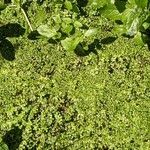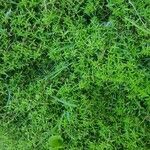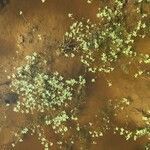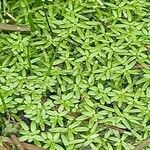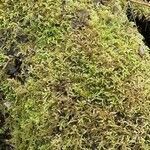Slender annuals, rooting at the lower nodes, with loosely clustered stems 1–2 dm, typically growing mainly submerged with only the shoot-tips floating, but sometimes stranded in mud and wholly emersed, rarely wholly submersed; submersed lvs linear, 0.5–1.5 cm; floating or emersed lvs spatulate to obovate, to 5 mm wide, triplinerved, appearing finely and sparsely lepidote at 10× or 20×; bracteoles whitish, 0.5–1.5 mm, deciduous; usually one male and one female fl per axil; frs mostly 1–1.4 mm long and ca 0.2 mm longer than wide, widest above the middle, compressed and with a broad, shallow groove down the middle of each side, and also with an evident commissural groove on each edge, narrowly winged (or at least sharp-edged) on each side of the commissural groove toward the summit, less (or scarcely) so below; pit-like markings on the fr tending to be aligned in vertical rows; 2n=20. In quiet water; circumboreal, in Amer. s. to W.Va., Nebr., Tex., and Calif.; also in S. Amer. (C. verna)
A herb. It has a ring of leaves. It grows 25 cm high. The stem is branched and the leaves do not have stalks. They are broadly oval and 5-15 mm long by 2-4 mm wide. The lower leaves are narrow. The flowers are in the axils of leaves and occur as 1 or 2 together. The fruit is dry and splits apart on ripening.
